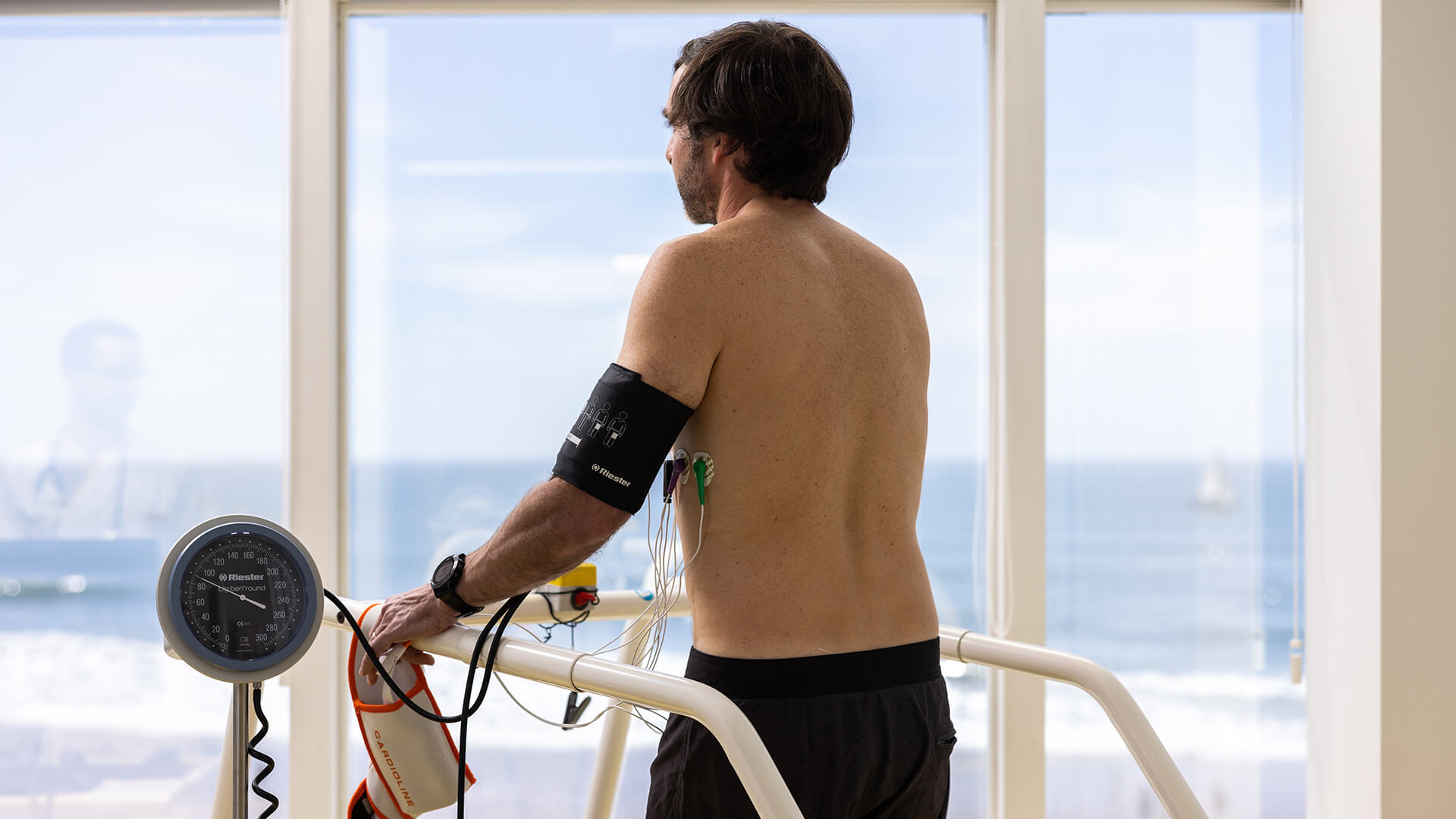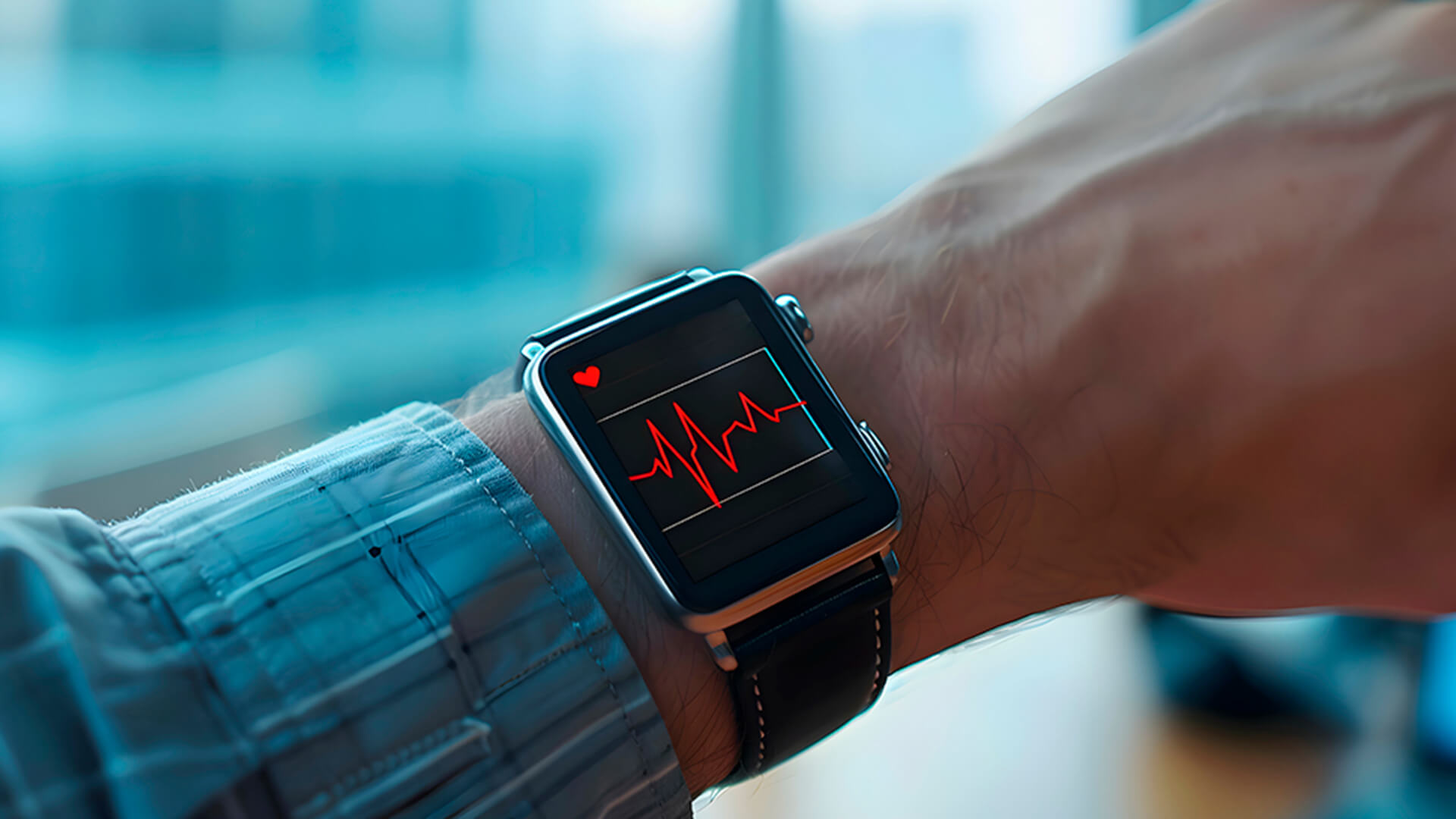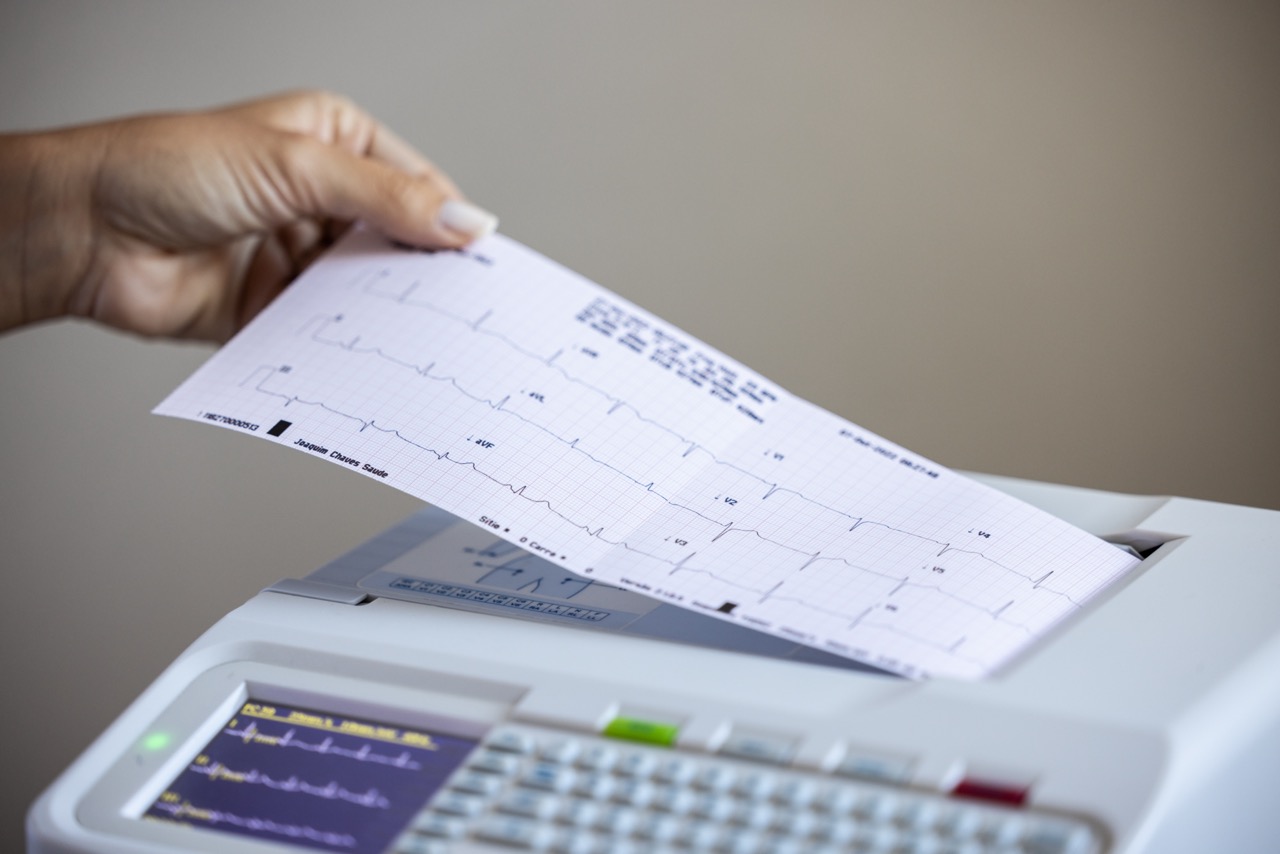An exercise stress test is an essential exam to understand how the heart reacts to exercise, and to detect signs that may go unnoticed in everyday life. Find out what an exercise stress test is, who should take one and what precautions to take.
What is an exercise stress test?
An exercise stress test, or ergometry test, is an exam that assesses the heart’s response to physical exertion, like walking, running on a treadmill or pedalling on a stationary bicycle.
This is one of the cardiac tests used to evaluate cardiovascular health and identify possible conditions that the body often does not show at rest. In a controlled and safe environment, the test can detect arrythmias, assess blood flow to the heart and provide guidelines for physical exercise in a responsible and personalised manner.
What is an exercise stress test for?
The importance of an exercise stress test goes far beyond simply monitoring the heart rate.
1. Detect heart disease
This exam helps identify conditions like heart disease, which often go unnoticed in routine exams. During exercise, the heart can reveal signs of ischemia (lack of oxygen in heart muscle cells), which may indicate blocked arteries or other heart problems.
2. Assess exercise-induced arrythmias
Some types of arrythmia, tachycardia or irregular heartbeat only occur when the heart is subjected to greater effort. An exercise stress test can help identify these changes in heart rhythm, to ensure an early diagnosis and proper follow-up.
3. Analyse cardiorespiratory capacity
Ergometry assesses the heart and lungs’ resistance to a progressive increase in exercise intensity. This is particularly useful for athletes or people who want to start an exercise program, to establish limits and goals safely.
4. Assess the effectiveness of treatments or interventions
Following heart surgery or treatment for cardiovascular disease, an exercise stress test is performed to monitor recovery and check the effectiveness of medication or procedures, such as stent insertion.
5. Guidance for physical exercise
For those who want to start an exercise regime, especially people with a history of heart problems, this test helps define the ideal exercise intensity, in order to avoid risks and promote a healthier lifestyle.
What are the types of exercise stress tests?
There are several types of exercise stress tests adapted to each person’s needs and the condition the physician aims to assess. Although the most common version entails exercising on a treadmill or bicycle, there are alternatives for patients who cannot exercise vigorously.
1. Conventional exercise stress test (or ergometry)
This is the most well-known test, and is performed on a treadmill (most common in Portugal) or stationary bike. The goal is to progressively increase the exercise intensity while monitoring the heart’s electrical activity, heart rate and blood pressure.
Indicated to: assess cardiovascular capacity, identify arrythmias and detect signs of ischemia (lack of oxygen in the heart).
2. Stress myocardial perfusion scan
This is one of the cardiac exams performed in Nuclear Medicine. The procedure combines physical exercise with the injection of a radioactive tracer to produce images of blood flow to the heart muscle.
Indicated to: identify areas of the heart that do not receive enough blood, even during exertion, or to clarify the results of conventional stress tests. This exam can be useful to diagnose angina pectoris.
3. Pharmacological stress test
Indicated for people who cannot exercise (e.g. because of physical impairments). This exam involves administering drugs that simulate the effect of exercise on the heart, increasing the heart rate and blood pressure.
Indicated to: assess cardiac function in patients who are physically impaired or recovering from surgery.
4. Exercise stress echocardiogram
This exam combines physical exertion (or medication) with an echocardiogram, producing real-time images of the heart’s function and identifying changes in heart muscle contraction during exercise.
Indicated to: detect areas of the heart that do not contract properly, due to blocked coronary arteries.
Exercise stress test: how is it performed?
An exercise stress test is a simple but highly effective exam. It involves the participation of cardiologists (or pulmonologists) and cardiopulmonology technicians, whose experience and know-how are crucial to ensure an accurate and reliable interpretation of the exam.
1. Careful preparation
Before beginning the test, the technician or physician will collect information on your medical history and conduct an electrocardiogram at rest. The goal is to guarantee that you are able to withstand the exam, and to identify possible risk factors.
2. Constant monitoring
Throughout the entire test, you will be connected to electrodes that monitor the heart’s electrical activity. Your blood pressure will be measured regularly and your heart rate will be monitored. Therefore, any change in heart rhythm or signs of excessive strain will be detected immediately.
3. Beginning of the exercise
This test is usually carried out on a treadmill or stationary bicycle. It begins at a slow pace, similar to a walk or calm bike ride. The pace increases progressively, simulating the effort the heart would make on a climb or faster run.
4. Gradual increase in exertion
The treadmill’s speed or tilt, or the bike's resistance, is increased progressively. The aim is to raise the heart rate to a target level and evaluate how the heart functions under stress.
5. Attention to your wellbeing
During the test, the technician or physician will look out for any signs of discomfort, such as chest pain, shortness of breath or lightheadedness. If you feel anything out of the ordinary, the test can be interrupted immediately. Patient safety always comes first.
6. Recovery phase
After the exercise, you will return to a calmer pace to allow your heart rate and blood pressure to gradually return to normal. This phase is equally important, as it shows how the heart recovers from exertion.
7. Analysing the results
Based on the data collected, the physician can identify possible signs of heart disease, arrythmias or restricted cardiorespiratory capacity. This information is essential to obtain a precise diagnosis and define a personalised action plan, whether to improve your health or optimise your physical performance.
What are the limitations of an exercise stress test?
As with any diagnostic method, an exercise stress test has its limitations. In cases of early-stage heart disease, for example, this Cardiology exam may not detect minor blockages in the arteries, thereby generating false negatives. On the other hand, factors like fatigue, anxiety or medication can influence the results, leading to false positives that cause unnecessary concern.
Furthermore, exercise stress tests assess the heart’s performance during exertion, but do not provide direct images of the coronary arteries, which limits the ability to detect the exact degree of blockage. Therefore, this exam should be considered a first-line tool that often needs to be complemented with other tests, such as myocardial perfusion scintigraphy or coronary angiography, for a more thorough and accurate diagnosis.
Exercise stress test and preparation: what to do?
An exercise stress test is a safe and controlled exam, but there are some essential precautions that should be taken at each stage of the process.
1. Before the exam
Prepare your body and mind for a tranquil experience.
• Inform the technician or physician about your medical history, medication you are taking and any symptoms you have felt recently, such as chest pain or shortness of breath.
• Avoid heavy meals in the hours before the exam, but do not take it on an empty stomach. A light and balanced meal is ideal.
• Avoid coffee, tobacco or energy drinks, as these can interfere with your heart rate.
• Wear comfortable clothing and suitable footwear, to facilitate movement while exercising.
2. During the exam
Stay vigilant and report any discomfort.
• If you feel any sign of discomfort, such as chest pain, lightheadedness or shortness of breath, inform the technician or physician who is monitoring your heart in real time. The principal aim of the exam is not to reach the maximum limit, but to assess the heart’s response safely.
• Breathe in a calm and controlled manner to help maintain a stable heart rate.
3. After the exam
After finishing the exam, take these precautions.
• Allow your body to gradually return to normal during the recovery phase. This stage is crucial to evaluate how the heart adapts after exertion.
• Hydrate and take a light meal to restore your energy.
• Follow the technician or physician’s instructions and wait for the results to be analysed, which may help identify potential problems or simply confirm that your heart is in great shape.









